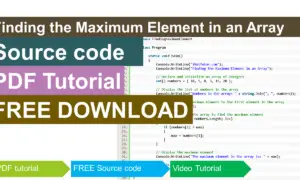Integration of Data Mining in Web Development
Introduction to Data Mining for Web Developers
Table of Contents
In the rapidly evolving digital landscape, web development is no longer just about creating visually appealing websites. It has become increasingly data-driven, with user behavior, preferences, and interactions shaping how websites are designed and managed. This is where data mining comes into play. For web developers, understanding and leveraging data mining can be a game-changer, enabling them to create smarter, more personalized, and highly efficient web applications.
What is Data Mining?
Data mining is the process of extracting meaningful patterns, correlations, and insights from large sets of data. It involves various techniques such as classification, clustering, regression, and association rule mining, which are used to analyze data and discover hidden relationships. Essentially, data mining turns raw data into valuable information that can be used for decision-making, predicting trends, and understanding user behavior.
For web developers, data mining can be integrated into web applications to analyze user interactions, predict user preferences, optimize content delivery, and much more. By applying data mining techniques, developers can enhance the functionality of their websites, making them more responsive to user needs and trends.
Why Data Mining Matters for Web Development
Data mining matters for web development because it adds a new layer of intelligence to web applications. Here are a few reasons why it’s crucial:
- Personalization: With data mining, developers can analyze user behavior and preferences to deliver personalized content. This could mean suggesting products based on previous purchases, recommending articles based on reading habits, or customizing user interfaces to match individual preferences.
- Enhanced User Experience: By understanding how users interact with a website, developers can optimize navigation, layout, and content placement to improve user experience. Data mining helps identify which features are most popular and which may need improvement, leading to a more user-friendly website.
- Data-Driven Decision Making: Data mining provides developers with insights that guide strategic decisions. Whether it’s identifying which features to prioritize, determining the best time to launch a new product, or understanding which content resonates most with users, data mining offers actionable intelligence.
- Fraud Detection and Security: In e-commerce and financial websites, data mining can detect unusual patterns that might indicate fraudulent activities. By analyzing transaction data, developers can create systems that alert administrators to potential security threats in real-time.
- Optimization of Marketing Efforts: Data mining helps in segmenting users based on various attributes like demographics, behavior, or purchase history. This segmentation allows for more targeted and effective marketing campaigns, leading to higher conversion rates.
Data Mining Techniques for Web Development
Incorporating data mining techniques into web development allows for the creation of more intuitive, responsive, and intelligent web applications. These techniques help developers uncover patterns and insights from user data, leading to better decision-making and improved user experiences. Below, we explore four key data mining techniques that are particularly useful in web development: Association Rule Mining, Clustering, Classification, and Recommendation Systems.
Association Rule Mining
Association Rule Mining is a technique used to find relationships between variables in large datasets. In the context of web development, this technique is often applied to discover patterns in user behavior, such as the items frequently bought together in an e-commerce site or the sequences of web pages visited.
Applications in Web Development:
- Market Basket Analysis: On e-commerce platforms, association rule mining can identify products that are frequently purchased together. This information can be used to suggest complementary items to users, increasing the likelihood of additional purchases.
- Content Recommendation: By analyzing the sequence of web pages visited, developers can suggest related content, enhancing user engagement and time spent on the site.
Example: A rule like “If a user buys a laptop, they are 70% likely to buy a mouse” can be derived from transaction data, enabling developers to create effective cross-selling strategies.
Clustering
Clustering involves grouping a set of objects (such as users or items) in such a way that objects in the same group (cluster) are more similar to each other than to those in other groups. This technique is invaluable for segmenting users based on their behavior, preferences, or demographics.
Applications in Web Development:
- User Segmentation: Clustering can group users with similar browsing or purchasing behaviors, allowing for targeted marketing campaigns and personalized content delivery.
- Personalized User Experience: By identifying clusters of users with similar interests, developers can tailor content, design elements, or features to suit different user groups.
Example: In an online streaming service, clustering can group users who prefer similar genres, enabling the platform to recommend new shows or movies that align with each user’s tastes.
Classification
Classification is a supervised learning technique where the goal is to assign items to predefined categories or classes based on their features. In web development, classification can be used to predict user actions or categorize content automatically.
Applications in Web Development:
- Spam Detection: Classification algorithms can filter out spam emails or comments by learning from labeled datasets of spam and non-spam examples.
- User Behavior Prediction: By analyzing past user interactions, classification can predict future actions, such as whether a user is likely to make a purchase or abandon their cart.
Example: An online retailer might use classification to predict whether a user is likely to churn (stop using the service) based on their recent activity, enabling proactive retention efforts.
Recommendation Systems
Recommendation Systems are a specialized application of data mining that suggest products, services, or content to users based on their past behavior and preferences. These systems are central to providing a personalized experience on websites and platforms.
Applications in Web Development:
- Product Recommendations: E-commerce sites use recommendation systems to suggest products based on the user’s purchase history, browsing behavior, and preferences.
- Content Personalization: On content-rich platforms like news websites or streaming services, recommendation systems tailor the content feed to match the user’s interests.
Example: Netflix’s recommendation system suggests shows and movies based on what a user has previously watched, improving engagement and satisfaction.
Data Mining Project Ideas in Web Development
Focused on User Behavior and Experience
- Predicting User Behavior and Personalization through Web Data Mining
- Description: This project explores how data mining techniques can be used to predict user behavior on websites. By analyzing browsing patterns, clickstreams, and interaction data, the goal is to develop models that anticipate user needs and preferences, enabling the creation of personalized web experiences that increase engagement and satisfaction.
- Enhancing User Experience with Hybrid Recommender Systems in E-commerce
- Description: This project investigates the implementation of hybrid recommender systems that combine collaborative filtering and content-based methods to enhance user experience on e-commerce platforms. The aim is to improve product recommendations by leveraging diverse data sources and algorithms to provide more accurate and relevant suggestions.
- Analyzing User Session Data for Web Performance Optimization
- Description: Focuses on analyzing user session data to identify performance bottlenecks and optimize web application performance. By examining metrics such as page load times, user interactions, and session durations, this project aims to enhance website speed and responsiveness, improving overall user experience.
- Identifying Key Factors Influencing User Engagement in Online Communities
- Description: This project aims to uncover the key factors that drive user engagement in online communities. Through data mining techniques, such as clustering and sentiment analysis, the project will identify patterns and behaviors that contribute to higher levels of participation and interaction within online forums and social groups.
Focused on Web Content and Structure
- Extracting Knowledge from Web Textual Data for Information Retrieval
- Description: Investigates methods for extracting valuable information from large volumes of web textual data to enhance information retrieval systems. By applying natural language processing and data mining techniques, this project aims to improve search accuracy and relevance, helping users find the information they need more efficiently.
- Improving Search Engine Relevance through Advanced Data Mining Techniques
- Description: This project explores advanced data mining techniques to enhance search engine algorithms. The focus is on improving the relevance of search results by analyzing web content, user queries, and interaction patterns to refine indexing and ranking processes.
- Analyzing Web Content Structure for Enhanced Information Extraction
- Description: Focuses on analyzing the structure of web content to improve the extraction of relevant information. The project involves studying HTML, CSS, and JavaScript structures to develop techniques that facilitate better parsing and interpretation of web data, leading to more effective content extraction.
- Detecting Fake News and Misinformation using Web Data Mining
- Description: This project aims to develop data mining techniques for detecting and combating fake news and misinformation on the web. By analyzing text patterns, sources, and user interactions, the goal is to create systems that identify unreliable content and mitigate the spread of false information.
Focused on Business and Marketing
- Customer Segmentation and Targeting Optimization using Web Analytics
- Description: Investigates the use of web analytics and data mining to segment customers and optimize targeting strategies. The project aims to analyze customer behavior, preferences, and demographics to create precise segments and develop targeted marketing campaigns that enhance engagement and conversion rates.
- Predicting Customer Churn and Retention through Data-Driven Models
- Description: This project focuses on developing data-driven models to predict customer churn and retention. By analyzing historical customer data, the goal is to identify factors that contribute to customer attrition and develop strategies to retain valuable customers.
- Optimizing Online Advertising Campaigns with Data Mining Techniques
- Description: Examines how data mining techniques can optimize online advertising campaigns. The project involves analyzing ad performance data, user interactions, and demographic information to enhance ad targeting, increase ROI, and improve campaign effectiveness.
- Analyzing Social Media Sentiment for Brand Reputation Management
- Description: Focuses on using data mining to analyze social media sentiment and manage brand reputation. By assessing user sentiments and feedback on social platforms, the project aims to develop strategies for responding to customer opinions and maintaining a positive brand image.
Focused on Technical Aspects
- Developing Novel Data Mining Algorithms for Web Application Performance
- Description: This project involves creating and testing new data mining algorithms to enhance web application performance. The focus is on developing algorithms that can handle large-scale data efficiently and provide insights for improving application speed and reliability.
- Efficient Data Preprocessing Techniques for Large-Scale Web Datasets
- Description: Investigates data preprocessing techniques tailored for large-scale web datasets. The project aims to develop efficient methods for cleaning, transforming, and preparing web data for analysis, ensuring high-quality inputs for subsequent data mining processes.
- Privacy-Preserving Data Mining for Web Applications
- Description: Focuses on developing data mining techniques that preserve user privacy while extracting valuable insights. The project explores methods such as anonymization and secure multi-party computation to ensure that data mining activities comply with privacy regulations and protect user information.
Tools and Technologies for Data Mining in Web Development
Data mining plays a crucial role in enhancing web development by extracting valuable insights from user data. To effectively utilize data mining techniques, web developers need to be familiar with various tools and technologies. Here’s an overview of popular data mining libraries and frameworks, as well as their integration with web development platforms:
Popular Data Mining Libraries and Frameworks
- Scikit-learn
- Description: Scikit-learn is a widely used Python library for machine learning and data mining. It provides simple and efficient tools for data analysis and modeling, including classification, regression, clustering, and dimensionality reduction. Its ease of use and extensive documentation make it a popular choice for both beginners and experienced data scientists.
- Use Cases: Building predictive models, performing data analysis, and implementing machine learning algorithms in web applications.
- TensorFlow
- Description: TensorFlow is an open-source framework developed by Google for machine learning and deep learning. It allows for the creation of complex neural networks and supports large-scale data processing. TensorFlow’s flexibility and scalability make it ideal for tasks requiring advanced data mining techniques.
- Use Cases: Developing deep learning models for tasks like image recognition, natural language processing, and recommendation systems.
- Weka
- Description: Weka is a data mining software suite developed by the University of Waikato. It includes a collection of machine learning algorithms and data preprocessing tools. Weka’s user-friendly graphical interface and extensive library of algorithms make it a valuable tool for data mining and analysis.
- Use Cases: Exploring data, experimenting with different algorithms, and building predictive models without extensive coding.
- Apache Spark MLlib
- Description: MLlib is a machine learning library built on top of Apache Spark, a distributed computing framework. It provides scalable machine learning algorithms and tools for big data processing. MLlib is designed to handle large datasets efficiently, making it suitable for big data applications.
- Use Cases: Performing large-scale data mining tasks, such as clustering and classification, on big data platforms.
- RapidMiner
- Description: RapidMiner is a data science platform that offers a range of data mining and machine learning tools. It provides an intuitive drag-and-drop interface for designing data workflows and building models. RapidMiner supports various data mining tasks, including data preprocessing, modeling, and evaluation.
- Use Cases: Developing data mining workflows, building and evaluating predictive models, and integrating with various data sources.
Integration of Data Mining Tools with Web Development Platforms
- Python with Django
- Description: Django is a high-level Python web framework that encourages rapid development and clean, pragmatic design. Python’s data mining libraries (e.g., Scikit-learn, TensorFlow) can be integrated with Django to build data-driven web applications.
- Integration Example: Using Scikit-learn to build a recommendation system that is integrated into a Django-based e-commerce site to provide personalized product suggestions.
- R with Shiny
- Description: Shiny is an R package that makes it easy to build interactive web applications directly from R. It is particularly useful for creating data-driven dashboards and visualizations.
- Integration Example: Developing a Shiny app that visualizes and analyzes web analytics data, allowing users to interactively explore trends and patterns.
- JavaScript with Node.js and TensorFlow.js
- Description: TensorFlow.js is a library for running machine learning models directly in the browser or on Node.js. It allows developers to use pre-trained models or build custom models with JavaScript.
- Integration Example: Implementing real-time image recognition or natural language processing features in a web application using TensorFlow.js with Node.js.
- PHP with PHP-ML
- Description: PHP-ML is a machine learning library for PHP. It provides algorithms for classification, regression, and clustering, allowing PHP developers to integrate machine learning capabilities into their web applications.
- Integration Example: Using PHP-ML to analyze user behavior data and provide personalized content recommendations on a PHP-based website.
- Apache Spark with Web Frameworks
- Description: Apache Spark can be integrated with web frameworks like Flask or Django to perform large-scale data mining tasks and present the results in web applications. Spark’s distributed computing capabilities make it suitable for processing large datasets.
- Integration Example: Using Apache Spark to analyze big data from user interactions and displaying the results through a Flask-based web interface.
By leveraging these tools and technologies, web developers can enhance their applications with advanced data mining capabilities, enabling more personalized, efficient, and insightful user experiences.
Conclusion
Data mining has become essential in web development, offering invaluable insights that drive the creation of more personalized, efficient, and engaging web applications. By uncovering hidden patterns and trends within user data, developers can leverage techniques such as association rule mining, clustering, and recommendation systems to enhance user experiences and optimize content delivery. These capabilities enable developers to anticipate user needs and make data-driven decisions, leading to more intuitive and effective web solutions.
As web development continues to evolve, the integration of advanced data mining techniques will play a crucial role in shaping the future of web applications. Developers are encouraged to explore these techniques to unlock new opportunities for innovation and improvement. Embracing data mining not only enhances project outcomes but also ensures that web applications stay competitive and relevant in a rapidly changing digital landscape.
Readers are also interested in:
You may visit our Facebook page for more information, inquiries, and comments. Please subscribe also to our YouTube Channel to receive free capstone projects resources and computer programming tutorials.
Hire our team to do the project.


